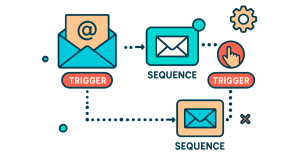When the success of your marketing automation campaigns relies on sending the right message to the right person at the right time, dynamic content increasingly becomes a “must-have” strategy.
Dynamic content creates tailored experiences for your audience by delivering highly targeted content based on their previous engagements across a variety of marketing channels, including your websites, social media, and email marketing campaigns.
Dynamic Content: Time to Invest in a Bit of Magic
When compared to your “old school” static email marketing newsletters and landing pages, dynamic content might appear as close to magic as anything you would have learned if your old school was called Hogwarts.
In reality, dynamic content takes a lot of hard work to produce. That content doesn’t write itself at the wave of a magic wand. But for those willing to put the effort in, the rewards can be substantial. In fact, if you thought your email marketing was already profitable, wait until you start deploying dynamic content in your email campaigns and landing pages.
Our research shows us that the return from dynamic content can be as much as 18 times higher than traditional static campaigns.
As with any marketing journey, the first step is often the most difficult. With this in mind, we’ve compiled five tips to get you started.
Five Tips to Help Your Marketing Get More Dynamic
- Supercharge your personalization strategy with dynamic geographic location: You can think of dynamic content as a supercharged version of perhaps more familiar marketing strategies like email personalization. Instead of just adding your subscriber’s name to the subject line or body text, you can look at other easy to access data, like geographic location. This is an excellent opportunity for marketers and business owners operating across multiple locations such as restaurants, retail outlets, auto dealerships, franchises, and various service-based companies. As and when new locations are added, dynamic content ensures a national campaign has that local feel. If a local option isn’t available, dynamic content can be used to deliver a generic “national” offer or present a holding option/waitlist to manage customer expectations.
- Create personal recommendations based on previous engagements: Just because your business is online, it doesn’t mean you can’t offer a personal service. When your customers click on your email campaigns or visit your website, even if they don’t buy anything, they share an incredible amount of data with you about their potential buying habits or intentions. Because birds of a feather flock together, you can pool much of this information and create specific buyer personas to deliver targeted offers based on collective insight. For example, when you know that a particular group of people has bought a certain product after their original purchase, you can target similar people with similar offers.
- Customer lifecycle marketing: Tailoring your offer based on where your audience sits in the customer lifecycle will help acquire new customers and retain existing clients. However, this approach requires careful consideration. For example, if you offer a discount to a new customer, will they ever wish to pay full price again? Similarly, existing customers might feel undervalued if new customers are given preferential treatment. As with all marketing strategies, the only way to guarantee success is to carefully test it first and then optimize accordingly. Customer lifecycle marketing can also be used as an incredible customer retention tool. For example, when a subscriber hasn’t engaged with your business for a period of time and you believe your relationship is at risk, it may be time to get aggressive with your offers.
- Taking stock of product availability: There is absolutely no point in promoting products or services that you can no longer deliver. This isn’t only a waste of money; it is incredibly frustrating for your potential customers and places any further engagement at risk. So as soon as an offer is no longer viable, why not switch it out for another relevant offer? It may also be worth including current information about the availability of a product or service. When a product or service shows limited availability, the perception of scarcity or FOMO (Fear of Missing Out) can be an incredible persuasive strategy.
- Putting people first, starting with your people: As marketers, we often ask “Who is the public face of our business?”. While the business owner or CEO is often pushed to the front, it is the people who manage everyday relationships that our customers turn to when they need support. The fact is, people do business with people they like and trust. So if your customers have an individual relationship with a member of your team, why not put them at the front of your campaigns. You can think of this strategy as the digital marketing equivalent of real estate companies’ highly personalized approach of highlighting local agents on billboards and in local press campaigns.
What’s Stopping You From Being More Dynamic?
When you consider how many marketers struggle to create regular static campaigns, creating dynamic content can be difficult for marketing organizations with limited resources. However, any investment in dynamic content will be returned multiple times over as it works so much more effectively than static content.
Dynamic content doesn’t need to be complicated. Because emails and landing pages are template-driven, it should just be a case of gradually adding new content (or blocks) to those templates and increasing relevancy with each campaign.
Dynamic content doesn’t have to be an all-or-nothing strategy. You can start small and add to campaigns as resources allow. As the relevancy of your campaigns help you achieve more of your goals, this should accelerate the process.
Do you need help in delivering dynamic content via your marketing automation platform? Contact us today at expert@emfluence.com.


